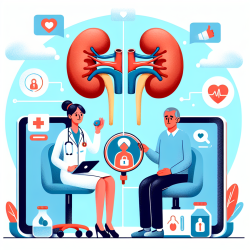Understanding Ataxia Telangiectasia: A Guide for Practitioners
Ataxia Telangiectasia (A-T) is a rare, complex genetic disorder that presents a unique challenge to practitioners working with children. Characterized by cerebellar degeneration, telangiectasia, immunodeficiency, and a predisposition to cancer, A-T requires a nuanced approach to diagnosis and management. This blog explores key findings from the comprehensive review article "Ataxia Telangiectasia: A Review" and offers insights into improving practice and outcomes for affected children.
Key Findings and Implications
According to the research, A-T is an autosomal recessive disorder caused by mutations in the ATM gene. The ATM protein plays a crucial role in cellular signaling pathways, particularly in response to DNA damage. The absence or deficiency of this protein leads to the hallmark symptoms of A-T, including neurological decline, immunodeficiency, and increased cancer risk.
Diagnosis and Management
Diagnosing A-T can be challenging due to its variability in clinical presentation. Practitioners should be aware of the combination of neurological symptoms, such as ataxia and abnormal eye movements, alongside immunological abnormalities and elevated alpha-fetoprotein levels. Genetic testing can confirm the diagnosis by identifying mutations in the ATM gene.
Management of A-T is primarily supportive, focusing on treating individual symptoms. Neurological symptoms are managed through physical, occupational, and speech therapies, although these do not halt disease progression. Immunodeficiencies may require immunoglobulin replacement therapy, and regular monitoring is essential to prevent infections.
Encouraging Further Research
The review highlights several areas where further research is needed, particularly in understanding the mechanisms underlying neurodegeneration and developing targeted therapies. Practitioners are encouraged to contribute to research efforts by documenting clinical observations and participating in studies that explore innovative treatment approaches.
Conclusion
Ataxia Telangiectasia presents a significant challenge to practitioners, but with a comprehensive understanding of its genetic and clinical aspects, improved outcomes are achievable. By staying informed about the latest research and collaborating with multidisciplinary teams, practitioners can provide effective support to children with A-T.
To read the original research paper, please follow this link: Ataxia telangiectasia: a review.










